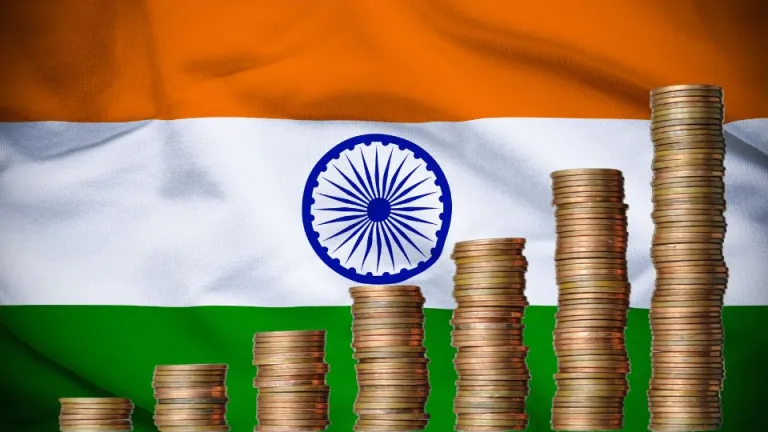S&P Global Upgrades India’s Rating to “BBB” - here’s why it matters!

After nearly two decades, India has finally climbed a notch up in the eyes of global credit watchers. S&P Global Ratings has upgraded the country’s long-term sovereign rating from BBB- to BBB, with a stable outlook.
That may sound like a small step "just a minus sign gone" but in the world of credit ratings, it’s a big deal.
What exactly is “BBB” rating?
Credit ratings are like report cards for countries. They tell investors how safe (or risky) it is to lend money to a government. S&P’s scale runs from AAA (pristine credit) down to the dreaded “junk” territory.
BBB- is the lowest rung of “investment grade.” BBB is a step higher - still not elite, but enough to say: This economy is solid and can meet its obligations, though it’s not immune to trouble.
For India, this move says: We’ve seen your progress "on the economy, on inflation, on public finances" and we trust you a bit more now.
Also read: What is Leverage in Trading? Everything you need to know!
What are India’s neighbours rated by S&P?
Here’s a quick look at how nearby countries stack up in the credit rating game:
Country | S&P Rating | Grade Type | Key Reasons & Context | Implications for Borrowing |
|---|---|---|---|---|
India | BBB (Stable) | Investment Grade | Strong GDP growth (~9% avg. past 2 years), inflation control, better fiscal discipline, major infra push | Can borrow at lower interest rates; attracts more foreign investment |
Pakistan | B- (Stable) | Speculative Grade | Upgrade in July 2025 after IMF support, improved reserves, debt rollover progress | Higher borrowing costs; investors cautious but sentiment improving |
Bangladesh | B+ (Stable) | Speculative Grade | Moderate but steady growth, manageable debt, external pressures from import costs | Borrowing possible but costlier than India; investment-grade funds stay away |
Sri Lanka | B (Negative/Unstable) | Speculative Grade | Recovering from debt default, high debt-to-GDP, fragile fiscal position | Very high borrowing costs; limited access to global capital markets |

Why S&P decided to upgrade?
The agency’s reasoning boils down to a few clear points:
Strong growth: Over the past couple of years, India’s GDP growth has been among the highest in the Asia-Pacific, averaging nearly 9%. Much of it is driven by domestic demand - households and businesses spending and investing - which cushions the country from global shocks.
Better fiscal discipline: The government has worked to shrink deficits, improve spending quality, and cut hidden liabilities.
Inflation under control: The Reserve Bank’s monetary policy has kept price rises in check, without strangling growth.
Infrastructure push: Big public spending - around 5.5% of GDP - is going into roads, ports, railways, and green energy, all of which can pay off in the long term.
S&P also noted that India’s external position is relatively stable, and even potential challenges - like higher U.S. tariffs - aren’t likely to derail the broader story.
Also read: 15 Agritech Startups Revolutionizing India's Agricultural Sector
Why investors care about rating?
For bond investors, this is especially sweet news. A higher credit rating often means a country can borrow at slightly lower interest rates because lenders see it as less risky. India’s benchmark 10-year bond yield dipped after the announcement, and the rupee strengthened a bit against the dollar.
For equity investors, ratings don’t directly drive stock prices, but they help shape sentiment. Foreign investors, particularly large funds that have strict rules about what ratings they can invest in, may now see India as a safer bet. More capital inflows can mean more liquidity in markets.
For the government, it means cheaper borrowing costs in the future, which frees up money for development spending instead of interest payments.
It’s not all smooth sailing
S&P didn’t hand out the upgrade as a blank cheque. The outlook is “stable,” not “positive,” meaning they’re not signalling another upgrade anytime soon. Risks remain:
If fiscal discipline slips; say, through excessive borrowing or populist spending, the rating could come under pressure. If growth slows structurally, the whole premise of resilience could weaken. On the flip side, if India manages to keep deficits low, control debt, and sustain high growth, there’s room for future upgrades, perhaps even into the coveted “A” category.
This upgrade doesn’t change life overnight for ordinary Indians. But it’s a clear signal to global investors: India is not just growing fast, it’s managing its finances well enough to be seen as a more reliable partner. The combination of speed and stability is rare in today’s global economy. It’s also a reminder that the world is watching, and that the policies we stick to now will determine whether the next big ratings move comes sooner rather than later.









